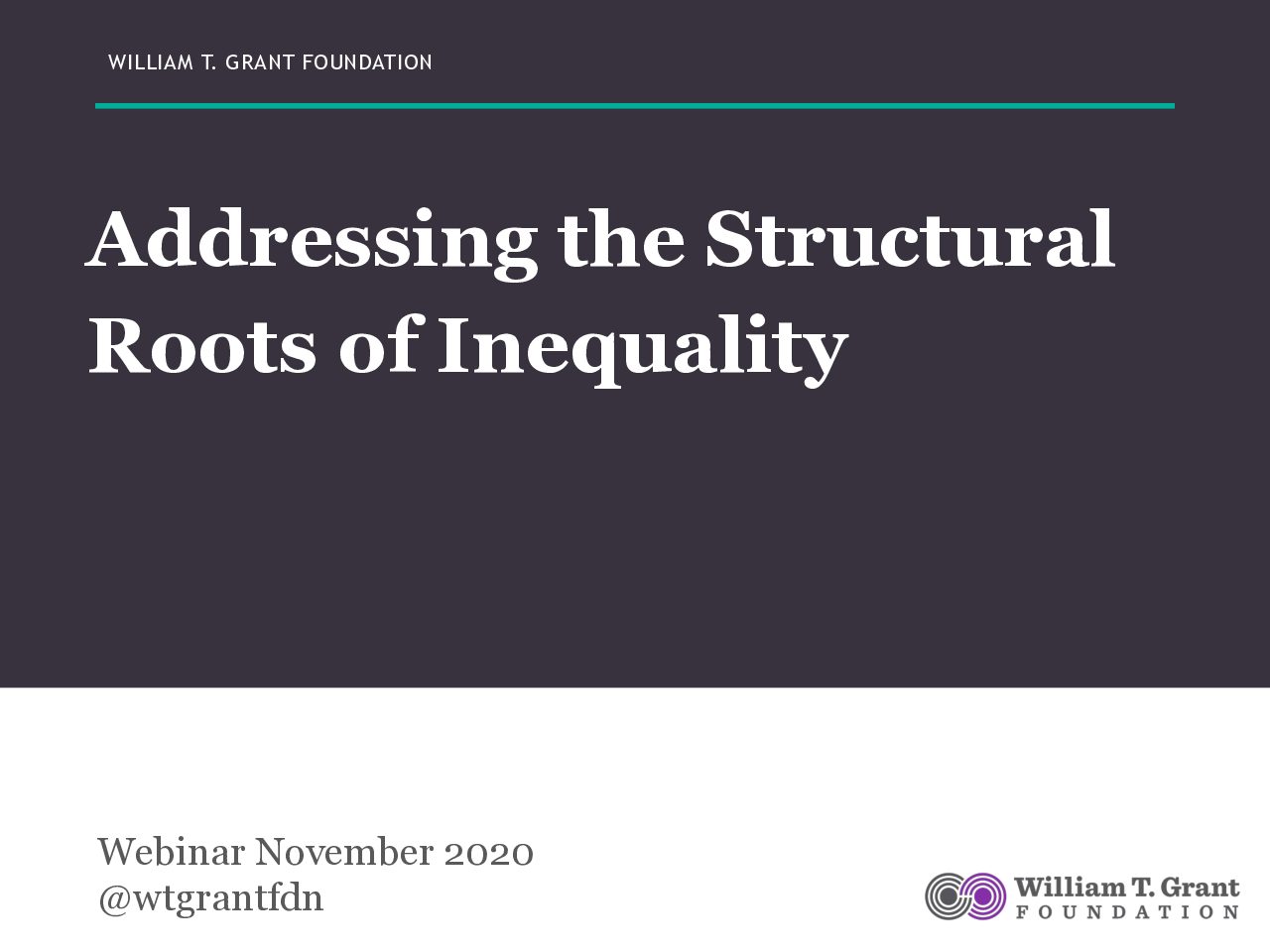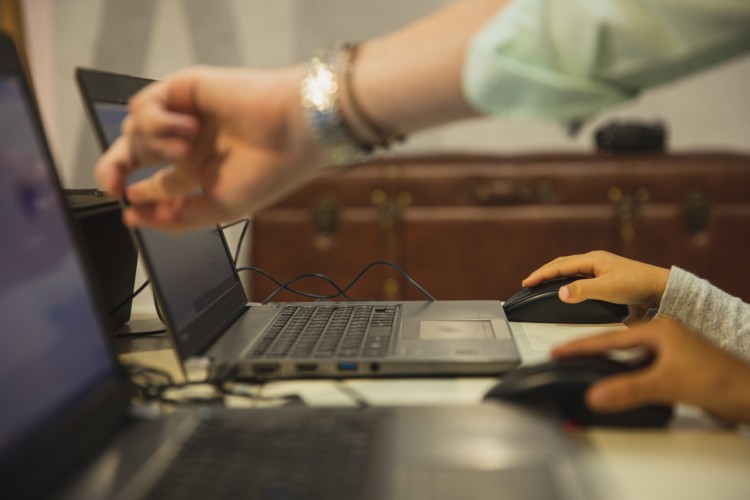The myriad effects of poverty and structural racism on youth outcomes are well known: In addition to their direct and often violent impact on youth, poverty and racism also create an enduring sense of threat and alienation, undermine academic motivation and achievement, and compromise mental health. These latter follow-on effects only compound the initial insult and ultimately make it even harder for teens living in poverty or who are members of marginalized racial and ethnic groups to avoid falling behind academically and eventually economically.
As part of our grant, “The Connection Project: A Social Intervention to Reduce Drivers of Disparity for Disadvantaged Youth,” my team and I have examined whether and how a school-based, experiential program to enhance students’ social supports could play a part in reducing racial and socioeconomic inequalities in academic, behavioral, and health outcomes. We have been intrigued by the possibility that—even as we recognize the need to work toward large structural changes in our society—we might also be able to make a difference in the lives of young people in the interim. Adopting an empowerment perspective suggests the potential to identify strengths within groups of youth facing the challenges of poverty and racism, which could be developed to enhance outcomes—particularly the capacity to reach out, connect with, and support one another. More importantly, we realized that we’d already seen just how this could work. Unlocking youths’ capacities to support one another was the key.
The Connection Project
If you were lucky as a young person, at some point you found yourself in a group of peers that really bonded. After-school groups, summer camps, theatre troupes, first-year dorms, and sometimes even just homerooms. The common element was that, for whatever reason, people (or maybe just a single person) in the group felt comfortable letting down their guard and sharing things not everyone talks about, which led others to open up and the group members to bond quickly and deeply. Bonds that can be highly supportive and that can last a lifetime. Unfortunately, this experience isn’t as likely to occur naturally for youth who are marginalized; the effects of structural racism and poverty can undermine the sense of safety needed to get the process started. But these bonds can be formed, and when they are, they provide support, uplift, and engagement. In turn, school can shift (at least a bit) from what for some is a social version of a Darwinian jungle to a setting that’s more conducive to friendship and support, and a place youth want to be at and where they can engage. That was the idea underlying our development of The Connection Project.
After several years spent working to identify the elements that lead supportive peer bonds to form naturally, we developed a 12-session, weekly program that could be run in a health class to try to help youth create these groups for themselves. The program is designed to capitalize on young people’s innate desire to connect with their peers by providing a prosocial means to encourage (but never pressure) them to do so. It leads participants through a stepped series of activities each of which helps them recognize their common underlying humanity (e.g., that we all share many of the same hopes and fears and uncertainties).
After several years spent working to identify the elements that lead supportive peer bonds to form naturally, we developed a 12-session, weekly program that could be run in a health class to try to help youth create these groups for themselves.
This is easiest to explain with an example. In one early activity, participants are given a lists of ‘masks’ that people wear to hide how they really feel (e.g., “the joker” who acts as though everything is for laughs but is pretty nervous underneath; ‘the tough one’ who acts like nothing bothers them but really feels pretty intimidated, etc.). They then anonymously fill out a survey of if and how often they use each mask. These are collected and redistributed so that each youth has someone else’s (unnamed) survey. We then go through the list one at a time and ask youth to stand up if their person endorsed the item. Youth are typically a bit shocked to see that everyone has been using the same masks they do. This activity is then led by a facilitated discussion in which participants are willing to begin to drop their anonymity and become more open with one another. Other activities build on youth’s interests in working together to reach out to engage and help others, to better understand the challenges they’ve faced in their lives, and to recognize and identify one another’s unique strengths.
Evaluating Impact
With our longstanding partner, Wyman Inc., we implemented the program in schools in the greater St. Louis area serving youth primarily from economically or racially/ethnically marginalized groups. We randomly assigned interested students in a regular health class to participate in either the class as usual or to have a once weekly pull-out session in which they participated in The Connection Project for the length of a regular class period. In all, 610 students participated across four school districts.
Our results to date have been promising. In a randomized design, we’ve found that the program indeed changes relationships and social behaviors—students are rated as more approachable by other students who are not in the program. More importantly, though, these changes flow through to reduced levels of depressive symptoms and greater academic engagement—changes that we see four months after the program’s completion. We see these effects as key to directly addressing not only areas of existing inequalities in youth outcomes, but to also potentially empowering and engaging youth in ways likely to have broader effects going forward.
Equally striking, we’ve found that the intervention contains significant externalities, in that it has impacts at the facilitator- and school-level that weren’t part of its explicit design. For example, the facilitators running groups have found the experience uplifting and compelling. Seeing quiet students come out of their shell and get powerful support from peers is having an impact on the adults involved as well. Similarly, school administrators, desperate to have some way to address the peer dynamics running unchecked in their schools have welcomed the intervention. Unlike other programs we’ve developed, where getting buy-in is a major hurdle, we’re finding programs and schools were eager to sign on even before our evaluation data were in. Wyman has recently begun a very limited rollout (recognizing the need to maintain quality control), but in the first year The Connection Project has already been adopted by providers in five additional states.
We see these effects as key to directly addressing not only areas of existing inequalities in youth outcomes, but to also potentially empowering and engaging youth in ways likely to have broader effects going forward.
We are highly encouraged by these initial results. At the same time, we are fully aware that this effort is not remotely sufficient to address the gaping disadvantages faced by youth who are marginalized, or that it can in any way replace or negate the need for broader structural reform. Our goal for the Connection Project is to be helpful to youth who must struggle daily with societally-created disadvantage—to help them feel and be more supported and less alone in those struggles in ways that may ultimately leave them feeling more empowered.
Looking Forward
Drawing on their experience with scaling evidence-based programs, Wyman will continue the work of replicating the program for high school youth with their National Network of partner organizations. Toward that end, a highly successful national pilot with 5 partner organizations was completed in the 2019-2020 school year, and Wyman is currently piloting a “virtual” version of the program to ensure it can meet the needs of youth given restrictions on in person meetings due to COVID-19.
Our early success also led us to recognize the potential of this approach beyond the high school level. We’ve most recently been developing and piloting a version of the program for entering college students, with a particular focus on the challenges faced by first generation students and students from marginalized groups. We’ve found an eager reception at our home institution, The University of Virginia, and have already expanded the program to be capable of serving 150 students a year. Recent grant support from UVA has now set up our goal to expand and evaluate this approach far more broadly in the coming years, before ultimately disseminating to other community and four-year colleges nationally. We have also begun piloting virtual versions of the program so as to cope with COVID-19 related restrictions on in person meetings and to address the sense of isolation these restrictions create.
As evidence continues to mount regarding the central role of close human connection to everything from our mental health to how long we live, the idea that we can use the endogenous capacity for connection and support among youth provides a bright spot in our efforts to address inequality in our society. While we work toward the broader structural changes that are so badly needed, we can nevertheless watch and support these connections forming and beginning to work their unique magic.





